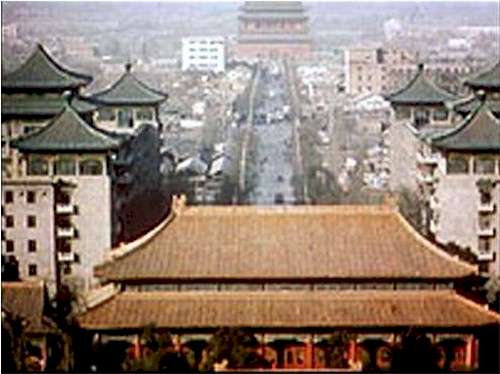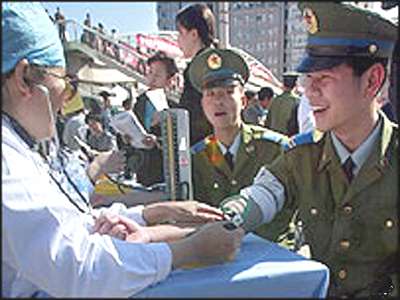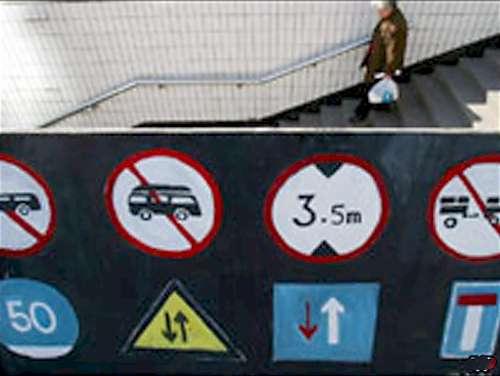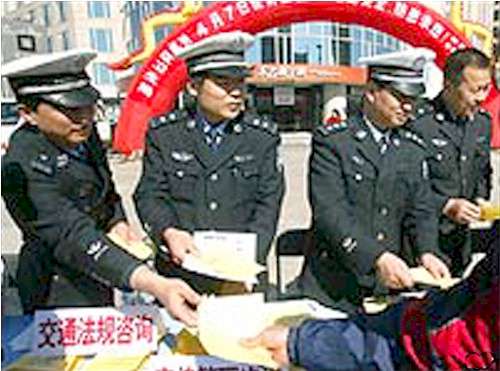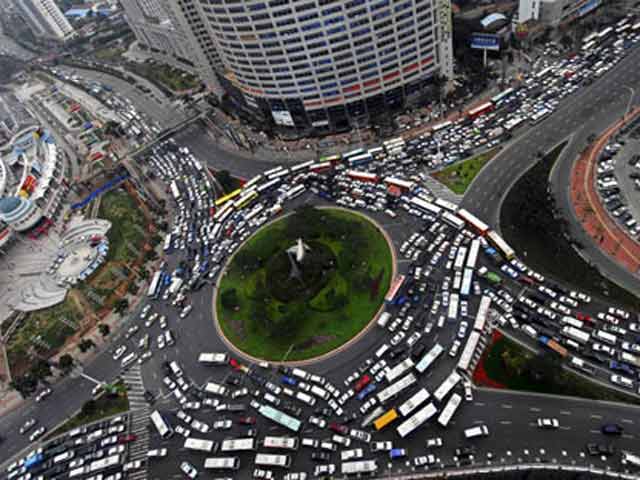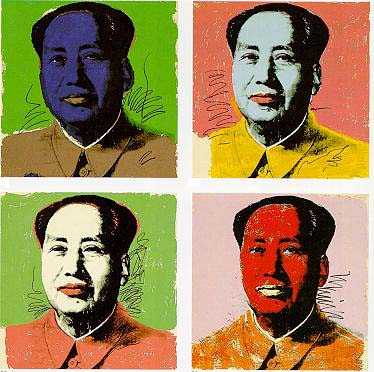Drivers Licences in China
Learning Your Chinese Highway CodeA question that sometimes drives me hazy: am I or are the others crazy? - Albert Einstein Have you ever noticed that anybody driving slower than you is an idiot, and anyone going faster than you is a maniac? - George Carlin by Louisa Lim
The first stage was a series of medical examinations where men in white coats did inexplicable things. One hit my knees and elbows with a small hammer, another scratched the soles of my feet with a stick, and a third conducted experiments involving holding a tuning fork to my ear. From their air of resignation, it was clear that these unfortunate individuals had been assigned one test each, which they were fated to inflict on prospective drivers in perpetuity. Once I had been given a clean bill of health, I trekked out to a big grey building on the far edges of Beijing to submit my documentation. The city planners must have been smirking when they decided where to put the driving test centre. With the Kafkaesque logic so beloved of Chinese bureaucrats, it is almost impossible to reach the place without driving there; but you cannot get a driving licence unless you go there.
China's roads are among the deadliest in the world Collecting the right documents was in itself an administrative feat that had taken months. Various permits had to be obtained and photocopied, my driving licence translated and stamped officially, and multiple photographs produced. Brandishing all the right bits of paper, I was given a date for my test. It was a written exam on the rules of the road in China. When I asked the bossy woman behind the counter where I could buy a book to swot up on it, she said breezily: "Oh there is no such thing, just ask someone who has done the test." My inquiries were not too successful. I was handed my test paper and looked down at it with horror. "Do not worry about it," our office manager Christine said. "It is easy. We all passed with 99%." "Why do you not just buy a licence like I did?" an English friend asked. "It saves so much hassle, it is worth every penny." A third friend admitted that she had been driving without a Chinese licence for years. "It does not matter, no one else can drive around here anyway," she said.
Chinese military officers are given free health checks on the street The morning of my test dawned. I had got up early and spent hours sitting in traffic to make it on time. I was handed my test paper and looked down at it with horror. One hundred questions faced me, all of them in, frankly, incomprehensible English. Several asked about the behaviour of people called practitioner drivers. It was only afterwards I realised this meant learner drivers. Even though most questions were multiple choice, that did not stop them from being baffling. In one case, answers a and c were exactly the same. When I pointed this out to the invigilator, he took a red pen and drew a big cross through the whole question, explaining that there had been a mistake with the printing. Other questions were well beyond the scope of this driver. I was expected to know how high one could load a motorcycle to travel on an expressway, and exactly what role the oil pressure gauge plays in the functioning of an engine. The most memorable question was: "If you come across a road accident victim, whose intestines are lying on the road, should you pick them up and push them back in?" This was not a driving scenario that I had ever envisaged.
New traffic sign boards are all part of the public road safety campaign At the end of it, I flunked the test. I thought I had not done too badly with 63%, but the pass mark is 90%. My husband, who has worked as a taxi driver, and took the test in Chinese, failed too. He just scraped 70%. Unsurprisingly, our dual failure caused great mirth at the office. Our driver chuckled all the way back, even as he mounted the pavement and swerved round pedestrians to skip a traffic jam. Like other Beijingers, he is an expert at finding ways of avoiding the endless gridlock. After 6 months here, hurtling into the path of oncoming traffic does not faze me at all, though I did draw the line when one taxi driver tried to take me down a bicycle lane on the wrong side of the road. It is hardly surprising that China is becoming one of the most dangerous places in the world to drive. The written driving tests are, as I discovered, meaningless and no one pays any attention to the regulations anyway. Given the amount of traffic on the roads, driving is frankly a frustrating and hazardous experience. So maybe it is a blessing in disguise that I have no choice but to carry on riding my bicycle, for the moment at least.
Chinese traffic policemen distribute road safety information in Beijing Louisa Lim is a BBC correspondent in Beijing: Source: news.bbc.co.uk Thursday 22 April 2004 See also:
Forget Motorway Congestion - This Is a Traffic Jam
The M25, central London, the Autobahn... if you thought these roads were traffic-congested then take a look at this picture. Hundreds of cars queue aimlessly for the chance to actually get to their destination in Xiamen, South China. The country has experienced a massive increase this year in the sale of cars, according to the China Association of Automobile Manufacturers. Source: dailymail.co.uk 5 January 2007
Unwritten Road Rules at Odds with Code Bookby Nick Macfie Driving my battered old Volkswagen Santana on the streets of Beijing, I made the mistake of stopping at a red light. According to the Chinese highway code book, I did the right thing. It was a red light on a left turn. Not one of those red lights where you actually have to stop. Still, my stop broke the unwritten rules of the road. Drivers lined up behind me leaned on their horns and made all manner of gesticulations urging me to get out of the way. That's the problem with driving in China, which has some of the world's most dangerous roads. About 1,100 new cars and other vehicles hit the streets of Beijing every day. It is common to see cars back up on highways when they miss a turn. To see someone signal to overtake is a rare delight. I passed the road traffic theory test when I arrived in China 3 years ago, but a series of minor offences meant I had to retake it. My approach had always been "when in Rome et cetera." With cameras watching at just about every major junction, that was my mistake. I took the test again this month - and failed. I got 74 out of 100. The pass mark is 90. I thought it only right to buy the English-language version of the highway code and cram for my 3rd attempt, but the questions and answers are often contradictory, or just plain bizarre. And not because anything is lost in translation. Some are easy - "Blowing the horn in an area or section where horn blowing is prohibited is not permitted." True or false? Some are confusing - "If a motor vehicle is passing through an intersection without a traffic light or traffic sign, should it give right of way to vehicles that have a green light?" Some are scary - "When a bicycle rider tries to grasp a moving vehicle, the driver should accelerate to get away from him, stop quickly or stop smoothly?" The road rage question reads - "After quarreling with others, a driver: a, can drive the vehicle only after calming down; b, should fight the person with whom there is a disagreement and let the situation affect his driving; c, drive with rage." And then there is this favorite: "What should a driver do when he needs to spit while driving? a, spit through the window; b, spit into a piece of waste paper, then put it in a garbage can; or c, spit on the floor of the vehicle?" The answer, in case it comes up, is b. Source: shanghaidaily.com 19 March 2007
Guide to Driving in Beijing During the Olympicsby Ken Wills Tourists seeking their own Olympian challenge while attending the Beijing Games this August might be tempted to get behind the wheel of a rental car and take a spin on the roads of the Chinese capital. For these intrepid tourists, here are some tips about how to drive in Beijing, a city with three million vehicles on its roads. Those who find the road rules overwhelming can ride the subway or take taxis, buses or limousines to sports venues.
Happy driving, but be careful out there! Source: features.us.reuters.com 19 Feb 2008
Chairman Mao and China
Chairman Mao by artist Andy Warhol Source: artofcolour.com/popart2.html This China would have been split and subverted into many different lands and many different slave nations for the west if not for a group of men led by one man - and that man was the mighty Chairman Mao. Slave nations, under Russia and the USSR, under Japan, under the USA, under Canada, under the UK, under France, under Germany, under even Australia and New Zealand, under Thailand and Vietnam, under India and even Pakistan. Split and destroyed as was their intention and their predetermined malice to do so. Only the massive strength of Chairman Mao and the CCP kept China free. There are those of us that desire to see China forever free from the West. Only because Chairman Mao and the CCP did have the bomb (that they had to have) did the West back off and keep their distance. Too many write this that and the other that is trash, has no fact. Why is the face of Chairman Mao on every single note of money in China? Do you know why? Because the money would have little power and little value to the people if the mighty man's image was not on the notes. Wake up to yourself, you elite and you Western running dogs. Chairman Mao was the man, IS the man, that made China all that she is. Stop your very dumb and very stupid talk that is "Was THIS man or THAT... It was not. It was Chairman Mao. The strength of China to this very day - to this very second - is still the same man and that man is Chairman Mao. Combine that with the magnificent PLA and that is the reality. Write all the trash and all the elite thought you want. This China is here because of Chairman Mao and the CCP. One man's face on every note, to inspire confidence and to inspire memory and to make sure the truth and the facts are remembered. Chairman Mao. He made China, he protected China, he is the reason there IS a China. Chairman Mao. Wake up you running dogs, you Westerners and you elite. China will never be taken over and destroyed by the West. Never. Why? Chairman Mao. That is why. Chairman Mao. No Chairman Mao? No New China! Now, give the running dog theory a rest and eat the truth and the facts. What a mighty man he was and all China miss him dearly. Chairman Mao - the man who made the China you are looking at. (The above content represents the view of the author only.) Source: chinadaily.com.cn Reader's Opinions 8 September 2004
China's Huge Footprint Being Felt with the Rising Cost of OilThere are ongoing arguments about what is causing the worldwide spike in oil prices: growing consumption, the Iraq War, speculation based on unpredictable disruptions in production from Nigeria to Venezuela - and the entry of China as a major player. The conventional view is that the Chinese market alone is responsible for 40% of the global increase in oil demand since 2000. But apologists for Beijing say that while there is acknowledged strong - and very rapid - growth, China still only accounts for 6% of the world's total oil consumption and less than 3% of the world's total oil trade. That's despite the fact China is now the world's number two importer after the US with domestic production falling rapidly. Whatever the case, China's growth is certainly significant: While the Chinese economy grew by an official 9.7% during the first six months of this year its oil imports jumped 40%. Some forecasters - the ones not predicting a "hard landing" - say that the Chinese demand for crude will increase annually by 12% until 2020. China has not only become a new heavy addict of the world's oil teat, it is one of the worst offenders in terms of efficiency. To generate every $1 of GDP, China uses three times or more as much energy as the global average, 4.7 times more than the US, 7.7 times more than Germany and 11.5 times more than Japan. Unless a "hard landing" produces a Japanese or Korean style bust, Chinese oil consumption and imports are going to keep climbing. And so is the inefficiency of use. China is well on its way toward replacing a big part of its 1 billion bicycles with cars. Manufacturers produced only 220,000 vehicles in 1999. Last year they produced more than 2 million, an 81% increase over just the previous year. With 24 million cars operating in 2003, the People's Republic is projected to have 60 million private automobiles by 2010 and 130 million by 2020. If those straight-line projections - or anything like them - work out, oil for transportation alone will account for half of the total consumption. Again some industry analysts point out the annual average fuel consumption per car in China is 2.28 tons, 10 to 20% higher than the US, twice that in Japan. No wonder that Liberating Taiwan, a recently published book from the Chinese Military Publishing House, makes capturing the Southeast Asian Mideast oil route a part of a dramatic war scenario. Source: worldtribune.com Friday 22 October 2004 © East West Services, Incorporated
For more articles relating to Money, Politics and Law including globalisation, tax avoidance, consumerism, credit cards, spending, contracts, trust, stocks, fraud, eugenics and more click the "Up"
button below to take you to the page on "How Many Countries in the World?" Clicking "Up" from there will take you to the Index for this section. |
 Animals
Animals Animation
Animation Art of Playing Cards
Art of Playing Cards Drugs
Drugs Education
Education Environment
Environment Flying
Flying History
History Humour
Humour Immigration
Immigration Info/Tech
Info/Tech Intellectual/Entertaining
Intellectual/Entertaining Lifestyles
Lifestyles Men
Men Money/Politics/Law
Money/Politics/Law New Jersey
New Jersey Odds and Oddities
Odds and Oddities Older & Under
Older & Under Photography
Photography Prisons
Prisons Relationships
Relationships Science
Science Social/Cultural
Social/Cultural Terrorism
Terrorism Wellington
Wellington Working
Working Zero Return Investment
Zero Return Investment My family has a poor record with driving tests. I failed mine four times in the
UK. My father failed his first test for going too slowly, while my mother even managed to hit a police car on her first go. So it was with some trepidation that I
faced the prospect of getting my driving licence in China. Little did I know what an ordeal it would turn into.
My family has a poor record with driving tests. I failed mine four times in the
UK. My father failed his first test for going too slowly, while my mother even managed to hit a police car on her first go. So it was with some trepidation that I
faced the prospect of getting my driving licence in China. Little did I know what an ordeal it would turn into.